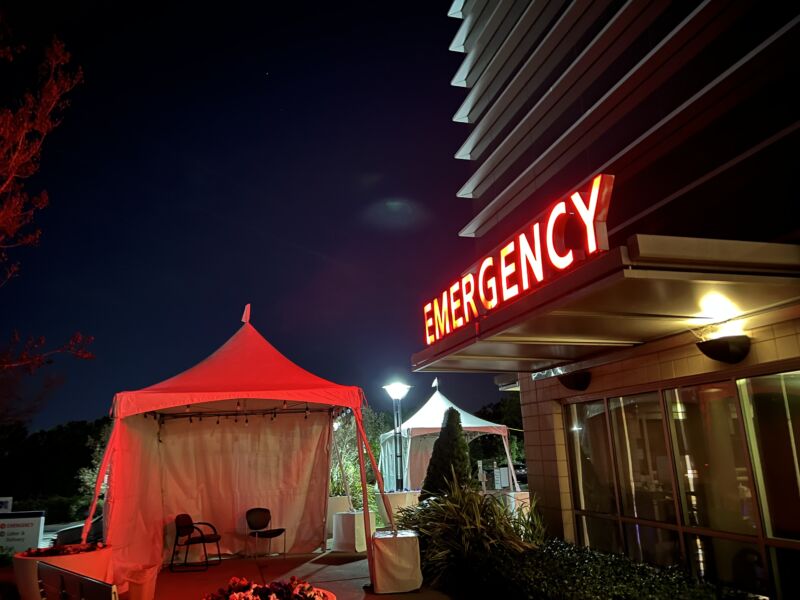
Although COVID-19 remains in a lull, hospitals across the country are in crisis amid a towering wave of seasonal respiratory illnesses—particularly RSV in children—as well as longer-term problems, such as staffing shortages.
Pediatric beds are filling or full, people with urgent health problems are waiting hours in emergency departments hallways and even parking lots, and some hospitals have pitched outdoor tents, conjuring memories of the early days of the pandemic.
In one of the most striking examples, the emergency department of a Seattle-area hospital became so overwhelmed last month that the department’s charge nurse called 911 for help, telling the fire department that they were “drowning” and in “dire straits.” There were reportedly over 45 people in the department’s waiting room and only five nurses on staff.
Central Kitsap Fire and Rescue Chief Jay Christian told local media that he sent a crew to the hospital, St. Michael Medical Center, and firefighters helped hospital staff there clean rooms, change beds, and take patient’s vital signs until the crisis subsided.
But in public meetings last week, the hospital’s president, Chad Melton, acknowledged that things aren’t getting better. Melton reported that there are more than 300 open positions at the facility, but no one has applied for positions in the emergency department. “The emergency department specifically, zero candidates interviewing. Zero,” Melton said.
Beyond capacity
A report last month from health care analytics company, Definitive Healthcare, estimated that over 300,000 health care providers dropped out of the workforce just last year due to burnout and other pandemic-related stressors.
Now, as the weather turns colder, a blend of seasonal respiratory viruses, including RSV (respiratory syncytial (sin-SISH-uhl) virus), flu, rhinovirus, and enteroviruses, are surging—early and hard. Pediatric hospitals are swamped, and beds are filling. Pediatric intensive care units are also full in many places.
In Pittsburgh, a children’s hospital is seeing a crush of RSV patients, and emergency department wait times are as long as eight hours. In California, hospitals in Oakland and San Francisco are seeing patient volumes higher than at any other point during the pandemic.
“Our ICUs are at capacity. We have boarding children in the emergency department that haven’t even been sent up to the floor, because all the hospital beds have been taken,” Jackie Grupp-Phelan, division chief of Pediatric Emergency Medicine at UCSF Benioff Children’s Hospitals, told the Bay Area’s ABC7. Grupp-Phelan added that the hospitals are turning away children from outside the area that they would normally take.
But children aren’t the only ones facing long waits for care. In Massachusetts General Hospital, adult patients reported being lined up in hallways and waiting eight hours for a bed. The Boston Globe noted that, like the case outside of Seattle, Massachusetts is also feeling the double-whammy of a surge in patients and understaffed facilities. An estimated 19,000 positions are unfilled in the state, according to a report last week from the Massachusetts Health & Hospital Association.
https://arstechnica.com/?p=1895862

